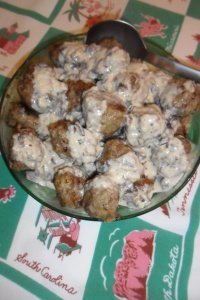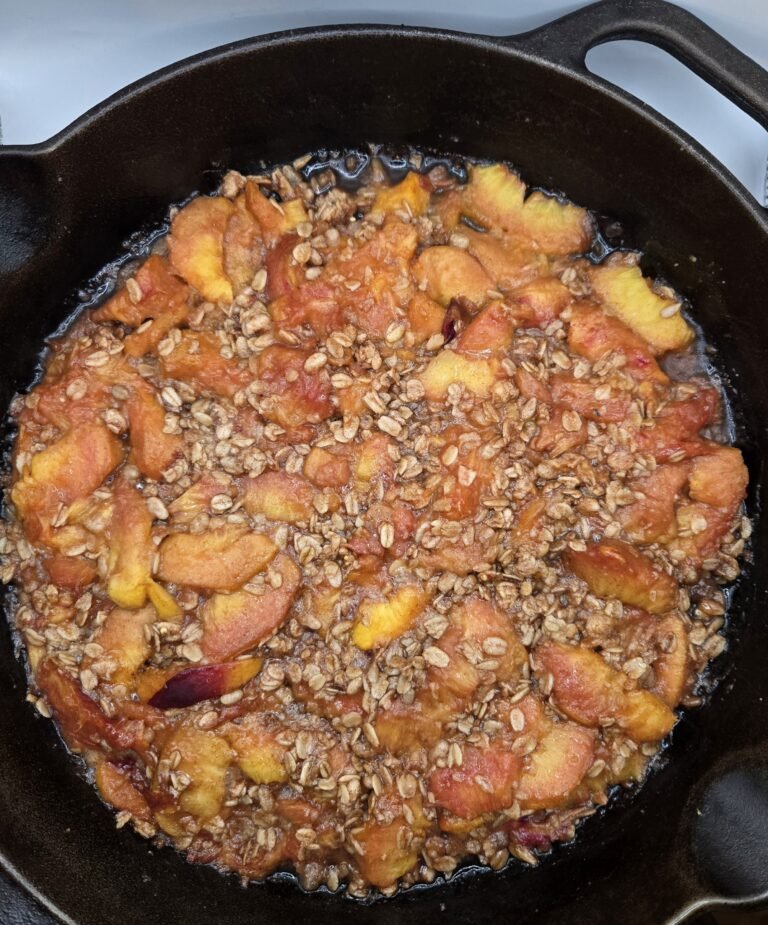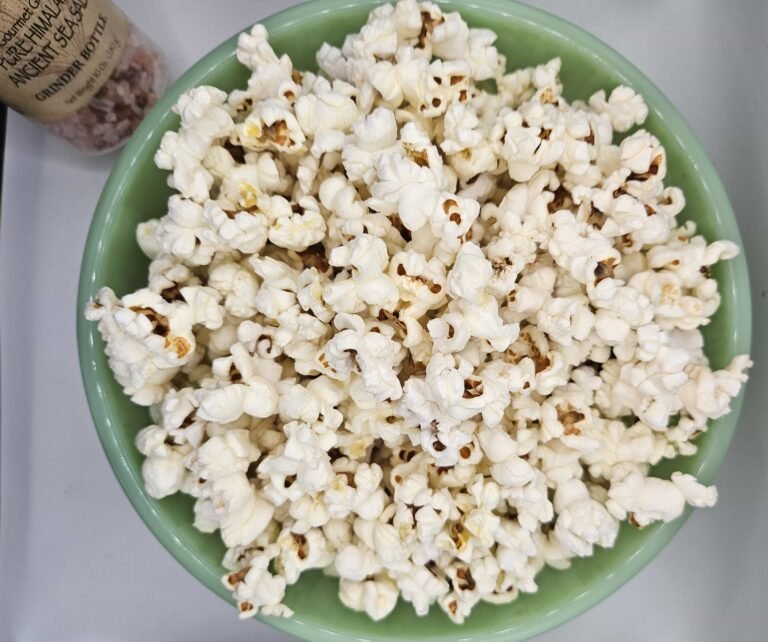A couple of days ago I mentioned a woman I met at the airport who was complaining about the price of (factory) ground beef. By now I imagine just about everyone has an idea of the way CAFOs (Concentrated Animal Feeding Operations) work, which means they’ve decided not to give it much thought if it results in cheaper meat. We don’t necessarily have the whole story, though, because we are not allowed to see what goes on inside animal operations.
“Ag-gag” law is the nickname for a type of law that forbids anyone from exposing agriculture issues such as animal cruelty, food-safety issues, and poor working conditions in factory farms.[1] A few of the ways people can face criminal charges due to these laws are by taking pictures on factory farms, employees reporting abuse, and investigators getting employment on factory farms. An independent journalist from D.C., Will Potter, found a way around these laws by raising $75,000 to buy drones to get a closer look at CAFO operations. Obviously these operations have something to hide, otherwise their facilities could be videotaped, and Potter wants to investigate for a book or documentary. We already have investigations by the Humane Society that brought awareness of factory operations to light and, Potter’s motivation, satellite imagery of the farm pollution and waste lagoons of sprawling industrial operations.[2]
Sick animals eating grain on CAFOs become infected with viruses, excrete pathogens, and then self-contaminate with their drinking water and environment. These pathogens go into the food processing system contaminating meat with fecal matter. Pathogens found in factory meat include E. coli 0157, campylobacter, C. difficile, and listeria (salmonella is more common in poultry). Although there were 31 pathogens known by the CDC to cause foodborne illness in 2011, the top five alone resulted in approximately 23,000 reported illnesses per day in the United States, 134 hospitalizations per day, and at least three deaths per day.[3] Many people are in protest of Potter using drones to expose factory farm practices and even say they will shoot down his drones, but the CDC calculates that reducing foodborne illness by 10% would keep about 5 million Americans from getting sick each year.
One of the meat industry’s solutions for reducing pathogens is irradiation, which I’ll go into in more detail another day. Another solution is to put the responsibility on the consumers by saying that all meat must be cooked to high temperatures that not only ruin the flavor in many cases but is far more likely to result in breast cancer.[4] Here’s another solution: eat meat from local, grass-fed cows. Beef cattle fed grain typical of CAFOs have one million acid-resistant E. coli per gram of feces, explained by grain fermentation in the intestines. By comparison, grass- or hay-fed cattle have only acid-sensitive E. coli, destroyed by an “acid shock” that mimics the human stomach.[5]
Today I’ll make something with ground meat from two local farmers. This recipe is in my friend Julie’s family, from her grandmother, and was given to me decades ago by her sister. I used it as a starting point to develop my recipe over the years, because a recipe passed down through a family couldn’t be a better start! I modified the order in which I combine ingredients to give them a softer texture, make the mushroom base for the gravy myself, and add a few things to give it an Italian twist.
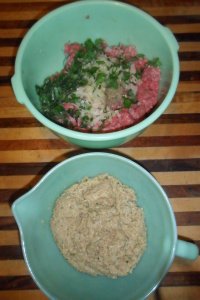
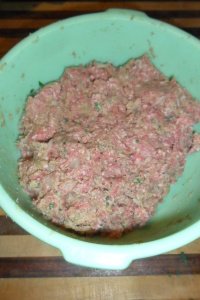
Rolling meatballs can take a little while, so it’s a perfect time to pull in a family member or friend with whom you’d like to have a heart to heart conversation. You can use these meatballs the basis for stroganoff and cook up some noodles, or serve them with mashed cauliflower, potatoes, etc.
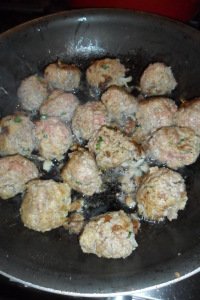
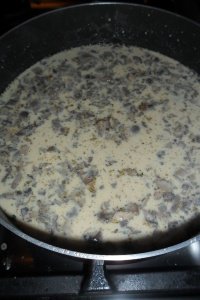
Grandma Lassard’s Meatballs w/ an Italian Twist
2-3 pounds mixed meat (grass-fed beef & veal, bison & turkey, etc.)
1 1/2 C breadcrumbs
1 C milk
3 eggs
1 T Spicely organic vegetable seasoning mix OR 1 t salt and 1/2 t pepper
1 T butter
1/2 large Spanish onion, finely chopped (~3/4 cup)
2 crushed cloves garlic
1 T sherry or red wine
1/4 C chopped fresh oregano
2 T chopped fresh parsley
1/4 t nutmeg
2 T avocado or coconut oil
1 C chopped mushrooms
1/4 C flour
1 C half and half
2 C broth (1 can organic low-sodium beef stock works)
1 t Spicely organic vegetable seasoning OR thyme
Preheat oven to 350. Put the meat in one bowl and the breadcrumbs in another. Make a well in the breadcrumbs and add the milk, eggs, and seasoning (or salt and pepper). Whisk the eggs mixture and then combine with the breadcrumbs and set aside to soak.
Melt 1 tablespoon butter over medium heat and add the onion. Cook for a few minutes and then add the garlic and sherry. Cook another minute; put the onion mixture into the meat mixture. Add the oregano, parsley, and nutmeg to the meat/onion mixture. Add the breadcrumb mixture to the meat bowl and take a few minutes to combine everything well.
Heat the oil over medium-high heat. Roll the meat into golf-ball size balls and brown them in the oil. Let them brown before you roll them around so they don’t break apart. Move the browned meatballs to a parchment paper lined baking sheet. Add more oil if necessary for browning. Bake meatballs for 30 minutes.
Toward the end of the baking time, put the mushrooms into the pan with the meatballs drippings over medium heat and cook for a few minutes. Add the flour and stir well. Whisk in the half and half, broth, and seasoning. Bring to a boil then simmer while it thickens. Pour over the finished meatballs.
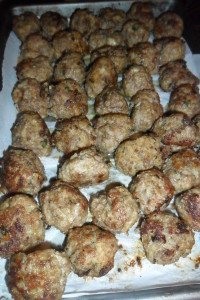

[1] “Anti-Whistleblower Bills Hide Factory-Farming Abuses from the Public,” humanesociety.org, March 25, 2014.
[2] “Deploying Drones to Get an Overview of Factory Farms,” by Peggy Lowe, NPR The Salt – What’s on Your Plate, July 19, 2014.
[3] Centers for Disease Control and Prevention (CDC), www.cdc.gov/foodborneburden, Feb. 2011; Factsheet_A_Findings_updated4-13.pdf.
[4] “Well-Done Meat Intake and the Risk of Breast Cancer,” Zheng, W., et al., Journal of the National Cancer Institute 90 (1998): 1724-9.
[5] “Simple change in cattle diets could cut E. coli infection,” by H. Roger Segelken, Cornell Chronicle, Nov. 8, 2014

